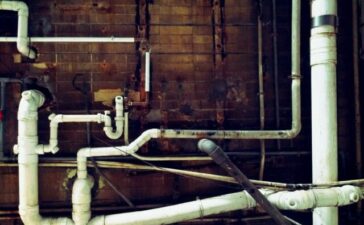Using plasterboard in construction can give you a versatile material that has a variety of practical applications. It can be great for things such as:
- Building a stud partition wall
- Finishing suspended ceilings
- Lining internal masonry walls (dry-lining)
In this how-to guide for plasterboard, you’ll find an explanation for installing a plasterboard wall, tips to consider when installing it, and what finishes you can use on your new plasterboard wall.
Tools and equipment you’ll need when working with plasterboard
- Tape measure
- Pencil
- Spirit level
- Craft knife
- Plasterboard adhesives or dry wall adhesives
- Plaster scrim tape
- Bolster chisel (for stabilising/wedging)
How to install plasterboard
Step 1 – Measure your plasterboard sheets so that they fit 12mm less that the floor-to-ceiling height of the space, then mark the spots where each sheet will stand on the ceiling and floor.
Step 2 – Make a pencil line on the side that will be against the wall, carefully cut along that line using the craft knife and spirit level, then bend the board the opposite way to cleanly snap it to size.
Step 3 – Apply plasterboard adhesive to the required edges of wall, ceiling, and openings, making sure to ensure you also apply a band of adhesive at skirting level too.
Step 4 – Position dabs of plasterboard adhesive directly on the noggings and joists behind where you’ll want your sheet to go.
Step 5 – Align your plasterboard with the markings you made earlier and carefully knock it into place so it presses into the dabs of adhesive.
Step 6 – Raise the board tight against the ceiling and stabilise it so it remains in place while the adhesive dries.
Step 7 – Repeat this process for each board, finishing off any joints using plasterboard tape to give the wall a smooth finish.
Tips for installing plasterboard
Make sure to hang your plasterboard horizontally rather than vertically, as the ‘grain’ you’ll find along their length means they’re stronger when attached horizontally.
When applying plasterboard adhesive, make sure to apply three vertical rows of dabs to secure it in place – one down the middle and one 25mm from the edge on each side. Your dabs should be roughly 250mm long by 50mm wide by 10mm deep to provide you with the right level of adhesive coverage.
If you’re placing the end boards, try to keep the factory edges together rather than the edges you’ve cut. This will help to reduce the amount of filling or covering required.
When applying plasterboard to a ceiling, the process is almost identical. You’ll need to find an alternative way of securing the boards to the ceiling while the adhesive dries, such as using temporary nails hammered through a board off-cut to make removing easier.
Finishing the plasterboard
Once everything has dried and your plasterboard is firmly secured in place, you can think about how you’ll finish your new flat surface. You can always skim your plasterboard if you want to create a more cohesive surface, but if you’ve correctly used filler and joint tape then you can potentially skip this step.
Because plasterboard offers a level, even surface to work with, it can be easy to paint directly onto it. Alternatively, you can apply wallpaper effectively without worrying about a rough surface underneath. From here, you can go about creating your ideal space.





